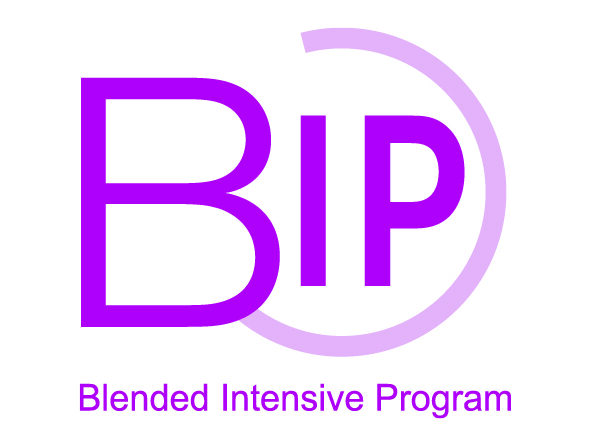Learning outcomes for projects
- The student is familiar with the methods to find information in the literature and can apply these to find information.
- The student can apply literature data to chart a practical problem.
- The student develops a research attitude and is capable of solving a practical problem.
- The student can apply current engineering knowledge to the problem at hand.
- The student is able to set up a planning, divide the work and sticks to the arrangements that have been made.
- The student can work in an international and multidisciplinary team, virtually as well as face-to face.
- The student can elaborate correctly on a well-defined project in an international and multidisciplinary team.
- The student knows the reporting requirements and can make a written report concerning the project.
- The student can orally present the project in front of fellow students and professors.
- The student is able to situate the results of his/her project in an international context in which economy, social context, ecology, ethics and safety play an important role.
Learning outcomes for lectures
| Lectures | Learning outcomes | |
| 1 | Sustainable pavement structures at Port of Antwerp | 1) Importance of loading on performance of road structures 2) Selection of materials in order to achieve sustainable port road structures 3) Importance of test tracks for applied research 4) Techniques to evaluate state of the road |
| 2 | WonderWalls: Greening the building envelope with vertical greening systems – benefits and environmental impact uncovered!? | 1) System types mapped 2) Concerns investigated 3) Learnings from case studies |
| 3 | Opportunities for sustainability in tunneling projects | After this lecture the student will have gained technical knowledge and insight about: 1) Clean operations 2) Tunneling life cycles 3) Road tunnels 4) Freight distribution |
| 4 | Introduction in industrial water treatment technologies | 1) Objective of water treatment in an industrial environment 2) Different water treatment technologies and selection models 3) Case studies in an environmental and economic context |
| 5 | Contribution of pavement surface characteristics to sustainability | The student receives content about: 1) Characterization of traditional pavement surface characteristics, 2) New surface characteristics based on sustainability requirements; 3) Techniques to provide new functions (functionalize) to pavement surfaces: photocatalytic, self-cleaning, superhydrophobic, anti-ice, among others; With these, the student will be able to make an Assessment of the impacts. |
| 6 | BIM | After the lecture, the student will have knowledge about: 1) Technology BIM, 2) Trends and news in technologies, 3) Gaining knowledge on the improvement of investment preparation and implementation processes. |
| 7 | Structures for Sustainable Oceans | The student will gather knowledge about: 1) Main threats and challenges nowadays posed to Oceans heath; 2) Approaches and strategies aimed at designing structures for sustainable exploitation of Oceans, including monitoring, modelling, habitats regeneration using constructed reefs; 3) Decision support models and oceans accounting. |
| 8 | Sustainable pavement design | After the lecture the students will be familiarized with (and intrigued for further research into) the following topics/concepts/elements: 1) The concept of sustainability in pavements 2) The concept of pavement design 3) Basic parameters for designing a sustainable pavement 4) Innovative technologies used in long-life pavements 5) Future perspectives-challenges |
| 9 | Remote inspection and pathology detection using UAVs | 1) The usage of UAVs as tools for constructions inspection 2) Pros and cons of the technology 3) Limitations of the usage of UAVs on the EU framework 4) Examples of the usage of advanced techniques based on AI for image processing and pa-thologies detection and characterization |
| 10 | Combining (non-)destructive techniques for the condition assessment of existing concrete structures: essential steps to come to a durable repair strategy | The student will be able to explain and use: 1) Concept of durable repair strategy 2) Durability related properties of concrete in a structure: 3) Effect of corrosion on service life of existing concrete structures 4) Use of (N)DT’s as diagnosis and assessment tools |
| 11 | Circular Bridges by RRR | The student will be able to explain and use: 1) Design of circular bridges – durability aspects 2) RRR: difference of recycling, reducing, reuse in case of bridges 3) Some cases of circular bridges |
| 12 | The use of biomasses in pavement engineering | After the lecture the students will be familiarized with (and intrigued for further research into) the following topics/concepts/elements: 1) Biomasses-definition/acquisition 2) How a biomass can be incorporated into pavement design and maintenance 3) Ongoing applications of biomasses in pavements worldwide 4) Future perspectives-challenges |
| 13 | Decoding the material-energy-carbon nexus for sustainable built environment | After the lecture, the student will have knowledge about: 1) Specific tools (e.g., LCA, MFA) to quantify life cycle environmental impacts 2) Application of these tools in the built environment 3) Strategies to improve built environment sustainability |
| 14 | Energy performance of buildings in terms of their sustainability | The students will have knowledge and insight about: 1) Understanding the energy demand in buildings; 2) Levels of building energy performance; 3) Impact of external parameters (climate, location, wind) on energy efficiency in buildings; 4) Impact of internal parameters (building geometry, size, orientation, buffer zones, thermal insulation, air tightness, thermal mass, glazing properties) on energy efficiency in buildings |
| 15 | Construction of an industrial pavilion | After the lecture the students will be aware of the existence of the most basic structural elements necessary in an industrial building |
| 16 | The Electric Intelligent Bus (EIB), a new mobility model | |
| 17 | Structural Health Monitoring | 1) The importance of early damage detection on civil engineering structures 2) Difficulties associated with the practical implementation of SHM systems 3) Examples of different approaches, techniques and sensors used on SHM 4) Results and evaluation of SHM analyses |
